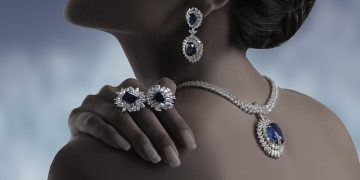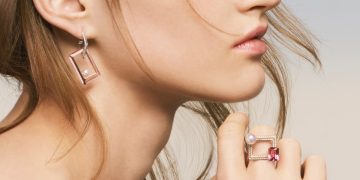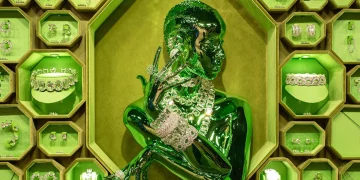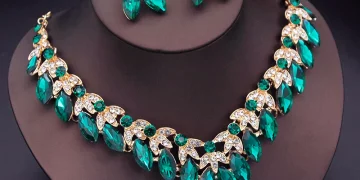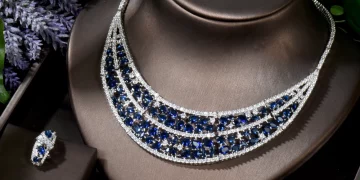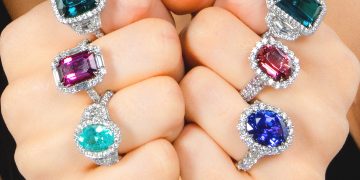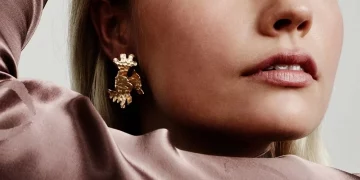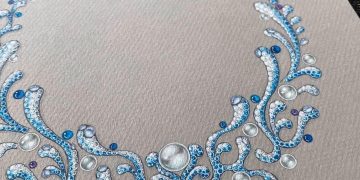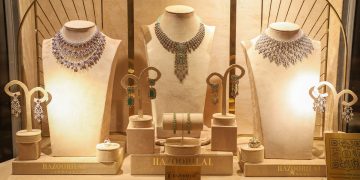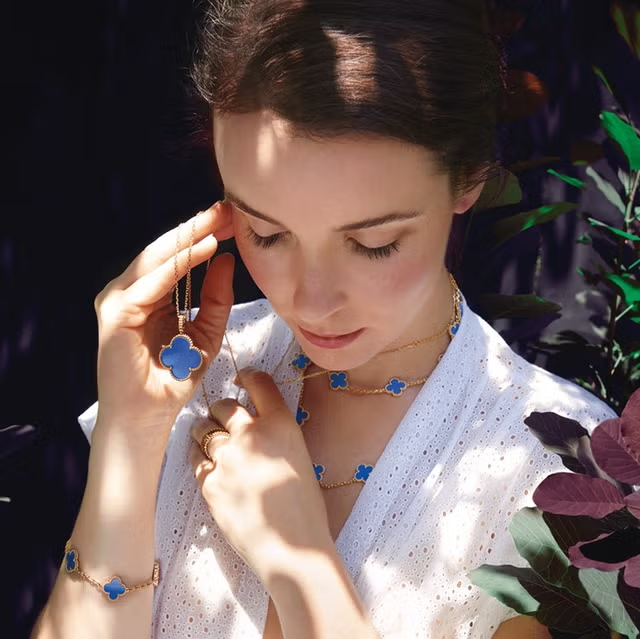In the ever-evolving world of fashion, jewelry brands are increasingly exploring innovative materials to create pieces that not only reflect modern trends but also push the boundaries of design, functionality, and sustainability. As consumers demand more unique, sustainable, and cutting-edge products, jewelry brands are turning to a variety of new materials and techniques to meet these expectations. Whether through the use of eco-friendly alternatives, high-tech innovations, or recycled materials, the jewelry industry is embracing change to shape the future of fashion.
In this article, we will explore how leading jewelry brands are utilizing innovative materials to create the jewelry of tomorrow, transforming both the design process and consumer experience.
1. Sustainable Materials: Paving the Way for Eco-Conscious Luxury
A. Lab-Grown Diamonds and Gemstones
One of the most significant trends in the jewelry industry in recent years has been the rise of lab-grown diamonds and gemstones. These stones are chemically and physically identical to their mined counterparts but are produced in controlled laboratory environments, which eliminates the environmental damage caused by traditional mining.
As consumer awareness of environmental issues rises, many jewelry brands are embracing lab-grown diamonds as a sustainable alternative. Brands like Tiffany & Co. and De Beers have expanded their offerings of lab-grown diamonds, making them accessible to a broader range of consumers. This shift is not only more eco-friendly but also aligns with younger consumers’ growing interest in ethically sourced products.
In addition to diamonds, gemstones like sapphire, emerald, and ruby are also being lab-created, offering a high-quality, sustainable option without compromising on beauty or luxury. For consumers looking for more sustainable options without sacrificing style, lab-grown gemstones are proving to be the future of the jewelry industry.
B. Recycled Metals and Materials
Sustainability goes beyond just the stones used in jewelry; it also involves the materials used for the setting and other components. Jewelry brands are increasingly turning to recycled metals, such as gold, silver, and platinum, to reduce the environmental impact of mining. By repurposing metals from older jewelry pieces or industrial scrap, brands can reduce the need for new mining, which is both resource-intensive and environmentally damaging.
For instance, Chopard has been a leader in using Fairmined gold, a certification that ensures the gold is responsibly sourced and contributes to the local communities where it is mined. Other brands, such as Cartier and Van Cleef & Arpels, have also integrated recycled materials into their collections, ensuring that the pieces are as sustainable as they are luxurious.
These efforts are not just about reducing environmental harm; they are also about embracing the idea of circular fashion, where jewelry can be created, worn, and then recycled into new pieces, extending the life cycle of the materials.
2. High-Tech Materials: The Intersection of Fashion and Innovation
A. 3D-Printed Jewelry
One of the most exciting innovations in the jewelry world is the use of 3D printing. This technology allows designers to create highly intricate and customized pieces that would be impossible to make using traditional methods. 3D printing not only enhances design possibilities but also enables more precise use of materials, reducing waste.
Brands like Bulgari and Tiffany & Co. have already started experimenting with 3D printing to create intricate, complex designs that would be difficult to achieve by hand. The use of this technology allows for unprecedented personalization and one-of-a-kind pieces that reflect a consumer’s personal style. Additionally, 3D printing can be used to create prototypes more quickly, reducing the time it takes to develop new collections and speeding up the time to market.
B. Titanium and Carbon Fiber
Traditionally, most luxury jewelry has been made from metals like gold, silver, and platinum. However, with the rise of advanced materials, titanium, carbon fiber, and even ceramics are making their way into high-end jewelry collections.
Titanium is an incredibly strong, lightweight, and corrosion-resistant metal, making it ideal for modern, high-performance jewelry. Brands like Tudor and TAG Heuer have used titanium in their luxury watch collections, and we can expect to see more jewelry brands incorporating it into rings, bracelets, and necklaces in the coming years.
Similarly, carbon fiber, which is lightweight, durable, and modern, has been used in watches and rings, particularly in sports and technical wearables. The sleek, futuristic look of carbon fiber, combined with its strength, makes it a desirable material for contemporary jewelry designs.
These materials are often paired with traditional metals, creating a unique contrast between the old and the new. They also open the door to creating jewelry pieces that are not only luxurious but also practical for everyday wear.
C. Smart Jewelry and Wearable Technology
The rise of smart jewelry is another key trend where high-tech materials are leading the way. While traditionally, wearable technology was restricted to devices like smartwatches or fitness trackers, jewelry brands are now integrating technology into their designs in more seamless ways.
For example, Oura Ring, a piece of smart jewelry that monitors health metrics, has gained popularity in recent years. Brands like Bulgari and Montblanc are now exploring ways to integrate Bluetooth, LED displays, and even biometric sensors into pieces like rings, bracelets, and necklaces. The ability to track health metrics or receive notifications directly through jewelry not only adds functionality but also redefines the concept of luxury. These pieces will likely become even more integrated into daily life, as jewelry evolves from purely aesthetic objects to multifunctional accessories.
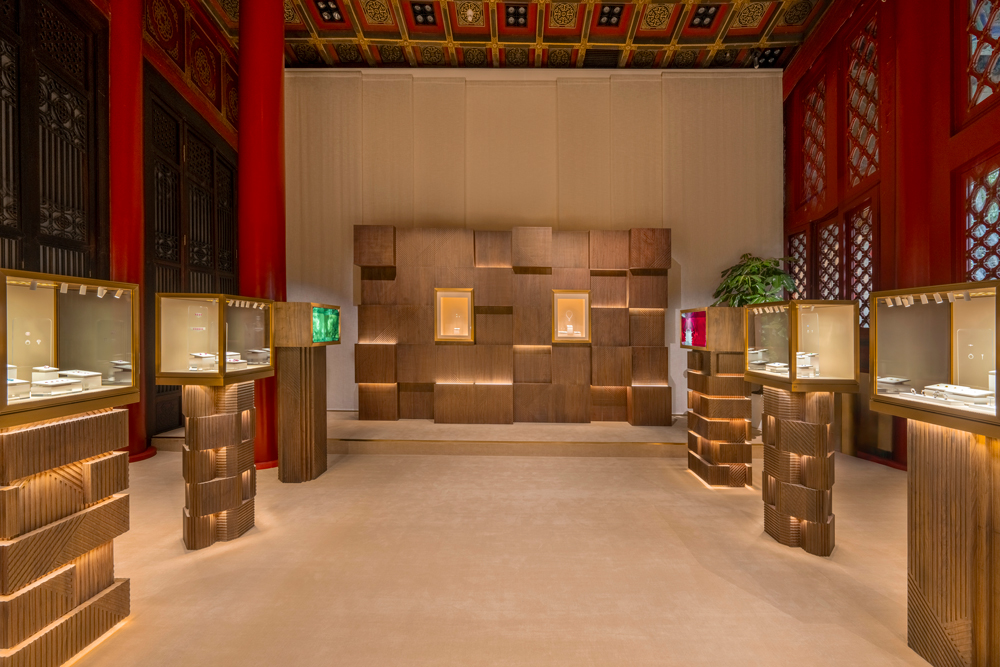
3. Natural and Organic Materials: A Return to Nature
A. Wood, Bone, and Horn
While precious metals and gemstones are the hallmark of traditional fine jewelry, natural materials like wood, bone, and horn are gaining traction in modern jewelry designs. These materials add a textural quality and a connection to nature, offering a rustic yet refined look that appeals to those seeking unique and eco-friendly alternatives.
Designers are using sustainable wood from responsibly managed forests, as well as ethically sourced bone and horn, to create unique jewelry pieces. The natural grains and textures in these materials make each piece one of a kind, giving it a sense of organic beauty that is hard to replicate with more industrial materials.
For example, David Yurman and Hermès have incorporated wood into their collections, creating jewelry that feels both natural and luxurious. The combination of organic materials with fine metals and gemstones offers a fresh way to rethink luxury jewelry, offering a tactile experience that is as beautiful as it is eco-conscious.
B. Pearls and Shells
Though pearls have long been a symbol of timeless elegance, their appeal is undergoing a transformation as they are being reimagined in contemporary designs. Designers are exploring baroque pearls, untreated pearls, and even shells as part of their collections, creating fresh, bold, and unconventional pieces that appeal to younger consumers.
Brands like Chanel and Gucci are embracing the trend, incorporating natural and unpolished pearls into necklaces, earrings, and bracelets, creating a more raw, organic aesthetic that aligns with modern fashion trends. The use of shells—whether from the ocean or other natural environments—is also gaining popularity, particularly in designs that evoke bohemian or tropical influences.
4. Transparency and Customization: The Consumer as Co-Designer
A. Transparency in Material Sourcing
In addition to using innovative materials, jewelry brands are also making a concerted effort to be more transparent about their material sourcing. Consumers today want to know where their products come from, and this demand for transparency is shaping the future of the jewelry industry.
Brands like Pandora and Swarovski are incorporating traceability systems to track the journey of their materials from the source to the final product. By providing consumers with detailed information about how and where materials are sourced, jewelry brands are building trust and appealing to the growing demand for ethically produced and sustainably sourced products.
B. Personalization and Bespoke Jewelry
The future of jewelry will also see an increase in personalization and customization. Consumers no longer want to purchase generic pieces; they are looking for jewelry that reflects their own style, values, and personal stories. Brands are responding to this demand by offering more customization options, from engraving names and dates to designing entirely bespoke pieces.
Technologies like 3D modeling and 3D printing have made it easier than ever for consumers to engage in the design process and create truly unique jewelry that suits their individual tastes. By allowing customers to participate in the creation of their jewelry, brands are empowering consumers and making the purchase feel more personal and meaningful.
5. Conclusion: Shaping the Future of Jewelry with Innovation
The jewelry industry is undergoing a profound transformation, driven by the introduction of innovative materials that are reshaping both design and consumer expectations. From sustainable materials like lab-grown diamonds and recycled metals to high-tech advancements in 3D printing and wearable technology, brands are pushing the boundaries of what jewelry can be.
As consumer demand for sustainability, personalization, and functionality continues to grow, jewelry brands are embracing change and creating the future of luxury through innovative materials. The integration of these materials into modern designs will not only elevate the aesthetic appeal of jewelry but also redefine the relationship between fashion, technology, and sustainability.

